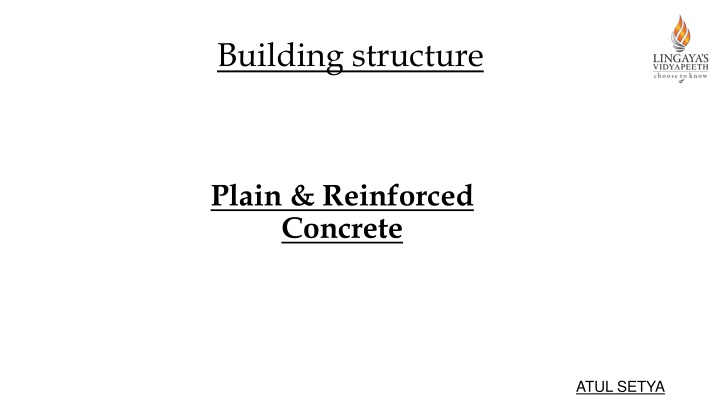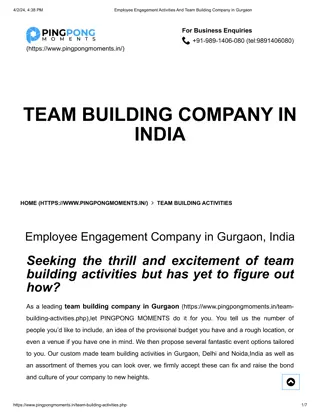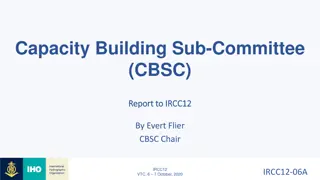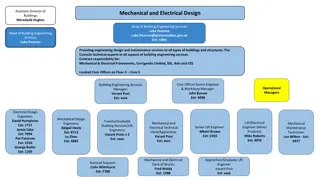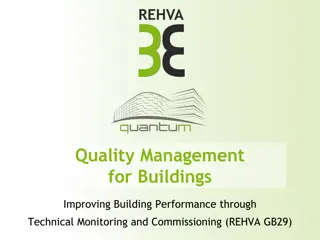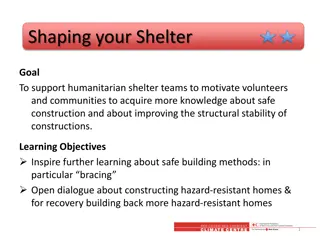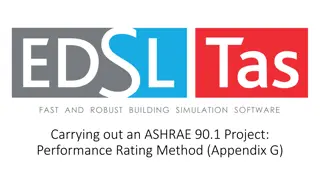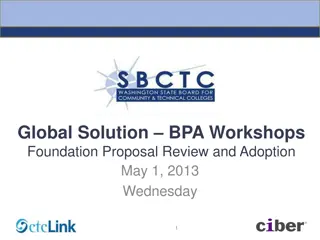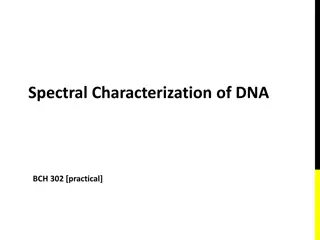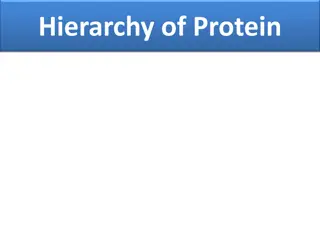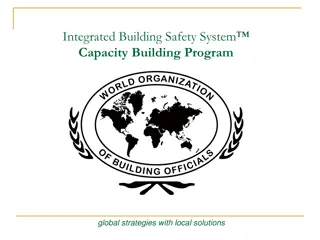Building structure
This content discusses the design aspects of building structures with a focus on plain and reinforced concrete elements. It covers different types of loads like dead and live loads, densities of important materials, basic design equations, concrete testing methods, and relevant ASTM standards. The text also delves into factors of safety and the considerations involved in ensuring the structural integrity and stability of concrete structures.
Download Presentation

Please find below an Image/Link to download the presentation.
The content on the website is provided AS IS for your information and personal use only. It may not be sold, licensed, or shared on other websites without obtaining consent from the author.If you encounter any issues during the download, it is possible that the publisher has removed the file from their server.
You are allowed to download the files provided on this website for personal or commercial use, subject to the condition that they are used lawfully. All files are the property of their respective owners.
The content on the website is provided AS IS for your information and personal use only. It may not be sold, licensed, or shared on other websites without obtaining consent from the author.
E N D
Presentation Transcript
Building structure Plain & Reinforced Concrete ATUL SETYA
Plain & Reinforced Concrete-1 Design Loads Dead Load The loads which do not change their magnitude and position w.r.t. time within the life of structure Dead load mainly consist of superimposed loads and self load of structure. Self Load It is the load of structural member due to its own weight. Superimposed Load It is the load supported by a structural member. For instance self weight of column is self load and load of beam and slab over it is superimposed load. 2
Plain & Reinforced Concrete-1 Design Loads (contd ) Live Load Live loads consist chiefly of occupancy loads in buildings and traffic loads on bridges They may be either fully or partially in place or not present at all, and may also change in location. Their magnitude and distribution at any given time are uncertain, and even their maximum intensities throughout the life time of the structure are not known with precision. The minimum live loads for which the floor and roof of a building should be designed are usually specified in the building codes that governs at the site construction. 3
Plain & Reinforced Concrete-1 Densities of Important Materials Material Density (Kg/m3) PCC RCC Brick masonry Earth/Sand/Brick ballast Intensities of Live Loads (Table 1.1, Design of concrete structures by Nilson) 2300 2400 1900-1930 1600-1800 Occupancy / Use Live Load(Kg/m2) Residential/House/Class Room Offices Library Reading Room Library Stack Room Warehouse/Heavy storage 200 250-425 300 730 1200 4
Plain & Reinforced Concrete-1 Basic Design Equation Applied Action x F.O.S = Max. Internal Resistance Factor of Safety Following points are relevant to F.O.S 1. It is used to cover uncertainties due to 1. Applied loads 2. Material strength 3. Poor workmanship 4. Unexpected behavior of structure 5. Thermal stresses 6. Fabrication 7. Residual stresses 2. If F.O.S is provided then at service loads deflection and cracks are within limits. 3. It covers the natural disasters. F.O.S. = Max. Failure load/Max. Service Load 5
Plain & Reinforced Concrete-1 Concrete Cylinder Concrete Cube 6
Plain & Reinforced Concrete-1 Relevant ASTM Standards Methods of Sampling Freshly Mixed Concrete (ASTM C 172) Practice for Making and Curing Concrete Test Specimens in Field (ASTM C 31) Test Methods for Compressive Strength of Cylindrical Concrete Specimen (ASTM C 39) 7
Plain & Reinforced Concrete-1 Testing of Samples for Compressive Strength Cylinders should be tested in moist condition because in dry state it gives more strength. ACI 5.6.2.1: Samples for strength tests of each class of concrete placed each day shall be taken : Not less than once a day Not less than once for each 110m3 of concrete. Not less than once for each 460m2 of concrete. Code allows the site engineer to ask for casting the test sample if he regards it necessary. 8
Plain & Reinforced Concrete-1 Acceptance Criteria for Concrete Quality ACI 5.6.3.3: Strength level of an individual class of concrete shall be considered satisfactory if both of the following requirements are met: Every arithmetic average of any three consecutive strength tests equals or exceeds fc . No individual strength test (average of two cylinders) falls below fc by more than 3.5 MPa (500 psi) when fc is 35 MPa (5000 psi) or less; or by more than 0.10fc when fc is more than 35 MPa 9
